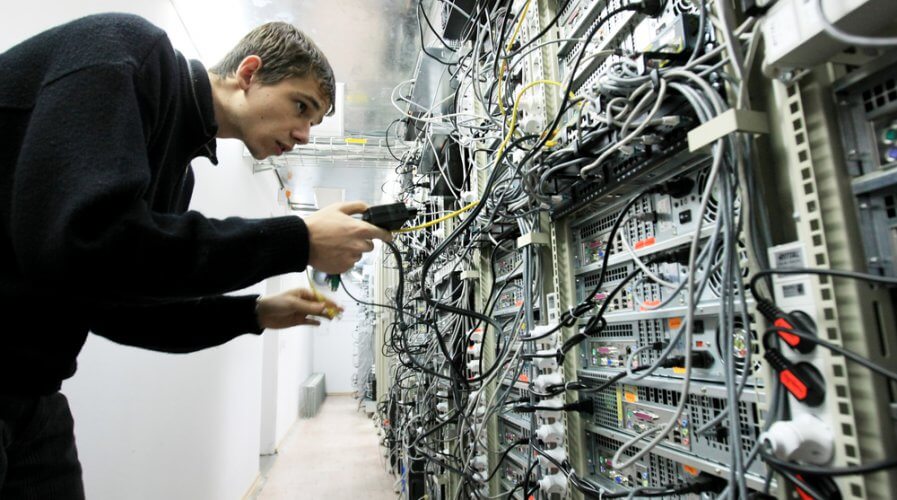
The SD-WAN infrastructure market continues to be highly competitive with sales increasing 64.9% in 2018 to $1.37 billion. Source: Shutterstock
IDC comments on the phenomenal growth and potential of SD-WAN
THE SD-WAN infrastructure market has grown to be highly competitive, with sales increasing 64.9 percent in 2018 to US$1.37 billion.
According to IDC’s latest forecast, this segment of the enterprise networking market will grow at a 30.8 percent compound annual growth rate (CAGR) from 2018 to 2023.
To better understand what’s fuelling this demand, Tech Wire Asia spoke to IDC’s Senior Research Manager (APAC Telecom Practice) Nikhil Batra.
“Cloud, as both a destination and an operating model, is driving a compelling need for network modernization and transformation.
“That need is felt perhaps most acutely on the WAN (wide area network), as enterprises adopting hybrid IT and cloud (IaaS and SaaS) seek to redesign their networks to accommodate distributed application environments and agile business processes.
“Growing demand for SD-WAN infrastructure results from these powerful market drivers, and the wave of growth shows no signs of abating in the foreseeable future.”
According to the analyst, SD-WAN is firmly placed at the beginning of enterprise software-defined networks and virtualization journeys.
As enterprises redesign their WAN architectures with SD-WAN as a centerpiece, there are additional opportunities to deploy virtualized network functions at the edge of the network.
As a result, Batra believes enterprises are looking at functions such as virtual security and WAN optimization/ acceleration, among others, for deployment as virtual network functions (VNFs) on commodity hardware.
“Leading communication service providers in Asia are already offering vCPE (virtual Customer Premise Equipment)/(Network Functions Virtualization) NFV-based virtual network services in conjunction with their SD-WAN services.”
At present, the number of network functions on offer is limited but IDC expects this to expand rapidly as communications service providers look to deploy a fully virtualized infrastructure spanning the customer premise equipment, provider edge, and datacenter.
In summary, Batra and his team believe that traditional enterprise WANs are unable to meet the needs of today’s modern digital businesses, especially as it relates to supporting SaaS apps and multi- and hybrid-cloud usage.
Further, enterprises are interested in easier management of multiple connection types across their WAN to improve application performance and end-user experience.
Given the rapid growth and support for SD-WAN by leading communications service providers globally, businesses seem increasingly interested in exploring SD-WAN deployments to tap into benefits such as dynamic management of hybrid WAN connections and the ability to guarantee high levels of quality of service on a per-application basis.
5G will make SD-WAN more attractive
As enterprises increasingly embrace SaaS and IaaS offerings, it is expected that they will look at SD-WAN as a means of intelligently automating how application traffic is delivered to branch sites.
SD-WAN will allow enterprises to move away from traditional hub-and-spoke WAN architectures and the backhauling of internet- and cloud-bound traffic, to on-premise datacenters.
Instead, businesses will increasingly use broadband internet breakout and other network transports (4G/LTE and 5G) at the branch, for cost-effective application delivery.
According to Batra, 5G’s characteristics such as high speeds, high bandwidth, and ultra-low latency will allow it to become a trusted wireless network (even more than current mobile generations in LTE, LTE-A) for carrying and supporting enterprise workloads with desired quality of service.
“5G is also one of the active drivers for wireless SD-WAN solutions. For industrial IoT adopters, wireless is oftentimes the only way to connect remote assets.”
Industrial IoT applies to industrial/enterprise use cases such as manufacturing and operational resources, retail distribution, smart cities/public sector, healthcare industries, energy and minerals industries including oil and gas, and mining.
“Systems integrators and service providers are realizing that ‘multi-cellular and multinetwork (fixed + cellular + satellite + LPWAN)’ is a viable way to provide reliable communications in remote and mobile environments, and enables the integration of 3G, 4G LTE, 5G, and satellite access technologies while exploiting the benefits of cloud-based software-defined networking.”
The use cases adopting wireless SD-WAN, therefore, are expanding to all forms of maritime and merchant shipping, energy, and resources including smart farming, healthcare, public sector, and terrestrial transportation.
Overall, given that SD-WAN is an enabler of digital transformation for many organizations, interest in the technology is expected to remain strong, sales will continue to grow, and the market is forecast to reach US$5.25 billion by 2023.
READ MORE
- Strategies for Democratizing GenAI
- The criticality of endpoint management in cybersecurity and operations
- Ethical AI: The renewed importance of safeguarding data and customer privacy in Generative AI applications
- How Japan balances AI-driven opportunities with cybersecurity needs
- Deploying SASE: Benchmarking your approach






